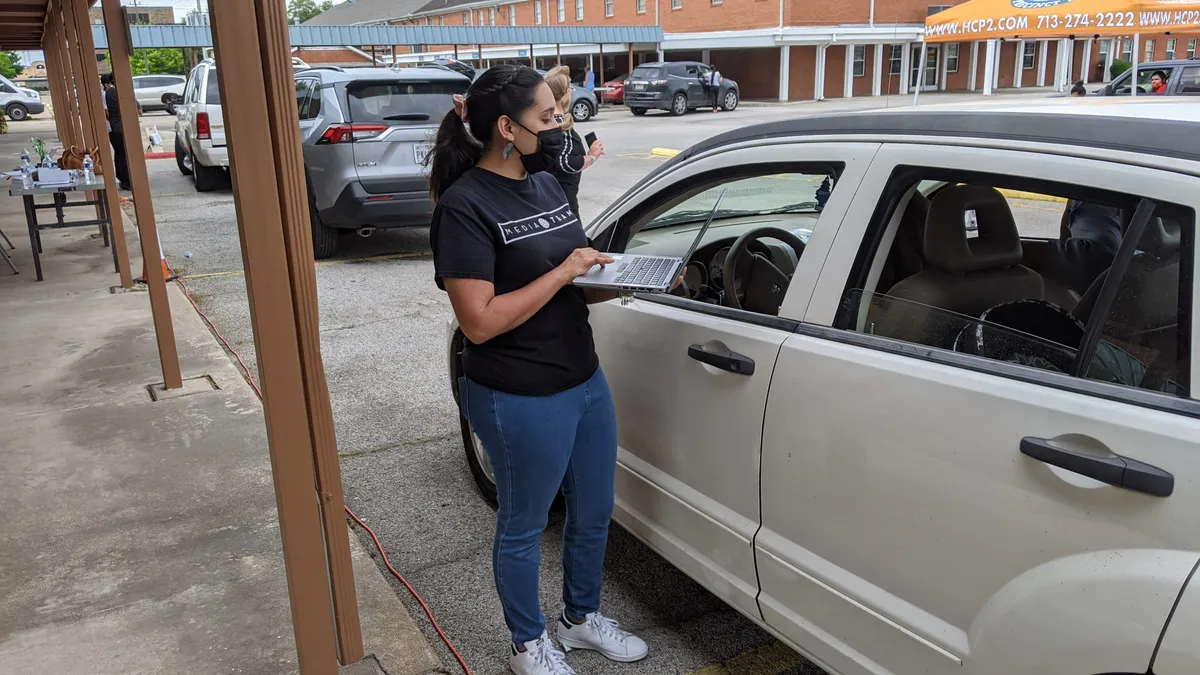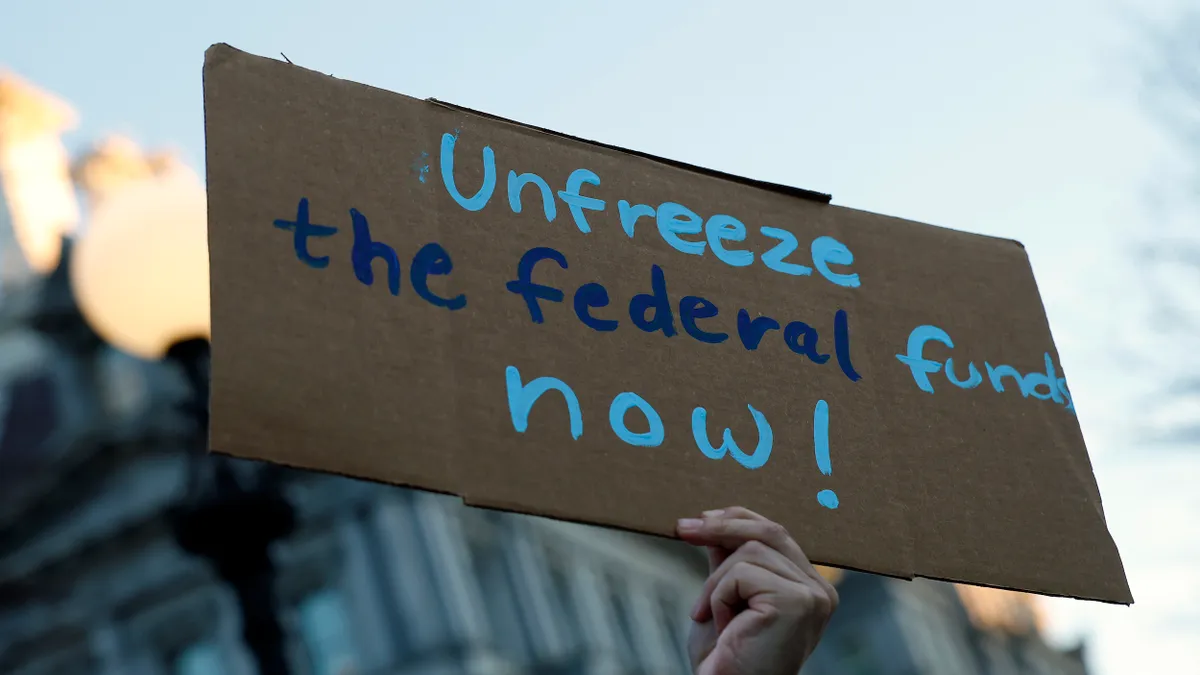In the race among state and local governments to distribute $46.5 billion in federal emergency assistance to renters in danger of eviction, Texas has made impressive strides.
As of last week, Texas had distributed over $750 million in rental and utility assistance to more than 124,000 households, more than half the amount of money the state received in federal coronavirus relief aid. That's an impressive figure compared with the rest of the country, which, as of late August, had collectively distributed about 11% of the federal relief lawmakers approved earlier this year.
Reflecting the state's success, the Houston-Harris County Emergency Rental Assistance (ERA) Program has distributed over $190 million to just under 50,000 households in its massive metro region, a program spokesperson said. The success of the program is a bright spot in the nationwide scramble to provide relief to millions of renters vulnerable to eviction, especially in the wake of the U.S. Supreme Court's decision to end the Centers for Disease Control and Prevention's eviction moratorium last month.
The U.S. Treasury Department has lauded the Houston-Harris County ERA as one of the strongest local ERA programs, potentially serving as a model for state and local leaders throughout the country who are attempting to prevent evictions but have been hampered by inconsistent distribution efforts and a patchwork of protections.
'One ring to rule them all'
The 2021 Houston-Harris County ERA Program — funded through federal coranavirus relief dollars — has succeeded, in part, because the city and county joined forces, according to the program spokesperson. Last year, the city and county had separate programs funded by the Coronavirus Aid, Relief and Economic Security Act, despite most of Houston falling within Harris County, according to the spokesperson. As a result, landlords who had properties in both the city and the county had to sign up for two programs, follow two sets of rules and file two sets of paperwork and keep track of two potential sources of support funds.
This year, the combined program is less cumbersome, the spokesperson said. There’s one set of eligibility requirements for tenants and landlords, one set of rules and one website.
"It’s kind of like that line from [the] 'Lord of the Rings': 'One ring to rule them all,'" the spokesperson said.
The program's user-friendly website is available in four languages. The system has a directory of currently over 20,000 properties and over 10,000 landlords, making it easier for tenants to find their landlord or property when they apply on the site.
The Houston-Harris County program attributes some of its success to its partnership with two local nonprofits, community development group BakerRipley and Catholic Charities of the Archdiocese of Galveston-Houston. Each nonprofit is well-respected and enjoys a high level of trust in the community, especially after the hurricanes and tropical storms the area has endured over the past decade, according to the spokesperson.
If you’re a resident who doesn’t trust the local government, she said, you probably do trust Catholic Charities or BakerRipley.
The AFL-CIO and other local leaders have also helped host 15 in-person sign-up events since the fall at community centers, churches and similar sites. The events have volunteers on-site with laptops to help people sort through their paperwork and apply in person, with some events even offering on-site vaccinations, the spokesperson said.
More hurdles remain
The local program still faces some obstacles, though. People who are afraid of Immigrations and Customs Enforcement, for instance, or are nervous about getting in trouble with the law are likely not applying in the numbers equivalent to the need, the spokesperson said.
Some residents also may get confused by the separate state and local rent relief programs, not knowing which program to apply for or that they can apply to both, she said.
And while the city and county program has distributed rental assistance funds more effectively than many other localities, eviction filings are still happening locally. More than 53,000 eviction cases had been filed in Harris County from the start of 2020 to Sept. 14, according to data science consulting firm January Advisors
"We're just seeing so many eviction cases filed that, yes, that rental assistance is helping people, but the problem is just bigger than that," said January Advisors Principal Jeff Reichman.
In fact, Houston had the second-most eviction filings last week compared with 30 other cities with available eviction data, according to Princeton’s Eviction Lab. The city also had the third-highest number of filings, nearly 42,000, since mid-March of last year, following New York and Phoenix.
The CDC moratorium "wasn’t much of a moratorium at all," Reichman said. It had to be invoked by a defendant, but because defendants don’t have a right to legal counsel for eviction cases in Texas, they weren’t always aware they could invoke the moratorium. Only about 3% of Harris County eviction defendants have been defended by an attorney since Jan. 1, 2020, and just 13% of potentially eligible defendants were able to invoke the moratorium, according to Reichman.
"The protections that are out there really require effort to enact," he said. "There are other ways to address these issues ... [for] people working in government ... there [are] opportunities for innovation and being proactive, both in terms of how rental assistance gets delivered and how those programs are set up, but also creative ways to get that money moving as fast as possible."
Those innovations start with having good data, he said. If local leaders don’t already have access to the relevant data, they can work with their court system to gather that information, allowing them to measure the effectiveness of their programs while also determining where to direct rental assistance or direct more outreach. "The key is to try to establish a pipeline of data so that you can manage this from day to day and week to week," he said.
However, data collection in itself can be a major challenge for local leaders. Not all states make court data publicly available, and communication silos can exist between the people managing the court systems and the people managing local housing efforts, according to Reichman.
A patchwork of local protections
Texas, Houston and Harris County aren’t alone in facing challenges to preventing evictions. Across the country, landlords and renters face a patchwork of guidance and protections. By the end of August, about 47% of renter households lived in states or localities that offer some form of eviction moratorium, according to the Urban Institute, meaning most U.S. renters households are at risk of eviction.
The remaining protections include some form of eviction moratorium in seven states and Washington, D.C., according to NOLO.com. Meanwhile, some localities offer alternative protections in lieu of a moratorium. Philadelphia mandates a mediation process between landlords and renters — among other measures — before a landlord can file for eviction. Other alternative protections across the country include extending eviction notices to provide renters more time to find housing or pay rent, according to the Urban Institute.
With the federal moratorium lifted, the focus should now be on both accelerating the distribution of emergency rental assistance and exploring opportunities for local and state governments to expand potential eviction protections, said Monique King-Viehland, associate vice president for metropolitan housing and communities policy at the Urban Institute.
Apartment firms can also provide protections to renters, according to Cindy Chetti, senior vice president of government affairs at the National Multifamily Housing Council. Housing providers can continue working with renters, work which she said has included setting up payment plans, waiving fees, identifying local community resources and communicating closely with residents to identify ways to work together during the pandemic.
Even with those efforts, Chetti said "the best way to guard against evictions and a tidal wave of evictions is to get the rental assistance out the door."




















